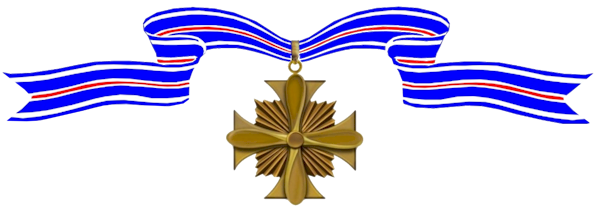For a time after his enlistment, George Bush was the youngest pilot in Naval Aviation. On September 2, 1944, his torpedo bomber was shot down while on a mission in the South Pacific. After six hours on a life raft, he was rescued by a submarine. His lifetime of public service culminated in his election to become the 41st President of the United States.

–
Born:
,
Awards Received
-

Distinguished Flying Cross
-
Distinguished Flying Cross
Service:
United States NavyRank:
Lieutenant, Junior GradeBatallion:
Torpedo Squadron 51Action Date:
September 2, 1944
Commander 2d Carrier Task Force Pacific: Serial 0596 (December 23, 1944)The President of the United States of America takes pleasure in presenting the Distinguished Flying Cross to Lieutenant, Junior Grade George Herbert Walker Bush (NSN: 0-173464), United States Naval Reserve, for heroism and extraordinary achievement while participating in aerial flights in line of his profession as pilot of a Torpedo Plane in Torpedo Squadron FIFTY-One (VT-51), during the attacks by United States Naval forces against Japanese installations in the vicinity of the Bonin Islands on 2 September 1944. Lieutenant, Junior Grade, Bush led one section of a four plane division which attacked a radio station. Opposed by intense anti-aircraft fire his plane was hit and set afire as he commenced his dive. In spite of smoke and flames from the fire in his plane he continued in his dive and scored damaging bomb hits on the radio station, before bailing out of his plane. His courage and complete disregard for his own safety, both in pressing home his attack in the face of intense and accurate anti-aircraft fire, and in continuing in his dive on the target after being hit and his plane on fire, were at all times in keeping with the highest traditions of the United States Naval Service.

